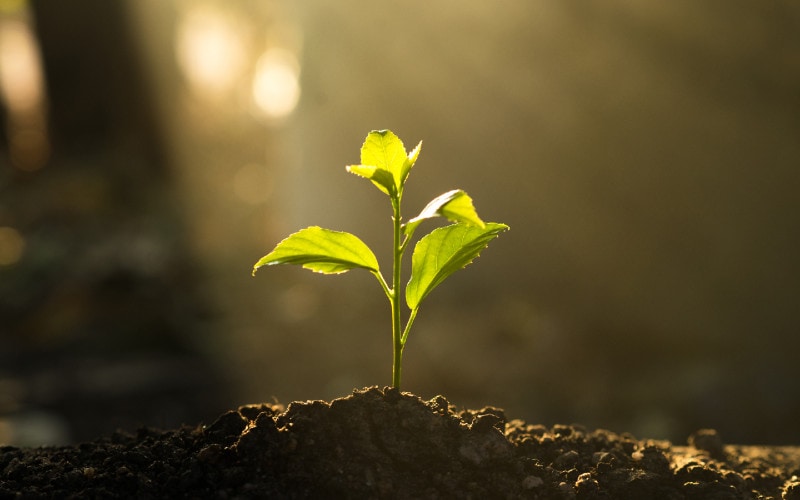How & When to Plant Fruit Trees: 5 Simple Steps
-
Codee Chessher
- Last updated:

Planting fruit trees may seem daunting, but there isn’t as much to it as you might imagine. In essence, it boils down to planting the tree and making sure it gets enough water, nutrition, and light. Depending on the type of fruit, you can have plenty of delicious fruit every year. Let’s check out exactly how to go about planting your very own fruit tree.
Before You Start
The first thing to figure out is what growing zone you live in because that will determine what types of fruit trees you can grow. Some fruit trees do well in a wide variety of regions, while others have considerable overlap and thrive in various conditions.
The type of tree you choose will impact what season you need to plant in as well. If your tree isn’t self-pollinating, you may need to plant two or more trees for them to bear fruit. Here are some examples of what fruit trees grow in the different USDA hardiness zones:
| USDA Hardiness Zone | Fruit Trees That Grow in This Zone |
| Zone 2 | Apple, pear, and plum |
| Zone 3 | Apple, cherry, plum, and pear |
| Zone 4 | Apple, plum, cherry, and pear |
| Zone 5 | Apple, plum, pear, and peach |
| Zone 6 | Apple, pear, apricot, plum, cherry, and peach |
| Zone 7 | Fig, nectarine, persimmon |
| Zone 8 | Orange, grapefruit, lemon |
| Zone 9 | Banana, tangerine |
| Zone 10 | Limes, cold-hardy avocado, citrus |
| Zone 11 | Limes, bananas, citrus |
This table doesn’t take into account microclimates, which are small pockets in some areas that have wildly different climates. To successfully grow in these areas, you must use your judgment and experience to determine what types of fruit trees will thrive.
To grow a fruit tree, you’ll need some supplies. It’s best to have everything together in one area, like a shed or storage area, so you don’t have to go hunting for items. Some of the items you might need include:
- Fruit tree sapling
- Shovel
- Open area that gets a lot of sunlight
- Stakes
- Twine/string
- Compost (optional but highly recommended)
- Mulch (optional but highly recommended)
The 5 Steps on How to Plant a Fruit Tree
1. Dig a Hole
Once you’ve chosen the perfect spot for your fruit tree, thoroughly soak the area with water to soften the soil. Then, it’s time to dig a hole! Ideally, the hole should be a bit larger than your sapling’s root ball so you can accommodate the soil.
If you have compost or fertilizer, you can mix that into the soil in the hole and the surrounding area. This will provide essential nutrients that will help your fruit tree grow healthy and strong.

2. Plant Your Sapling
If your sapling’s root ball is wrapped in burlap, cut that off with a utility knife. Place the sapling into the hole, resting the root ball carefully on the ground in the hole. Scrape the excess soil back into the hole. When you’re done, tamp it down with your feet or a shovel. Don’t tamp it down too tightly, though, because your sapling is still very fragile at this stage.
To help support your sapling, you can plant a stake or two beside it and lightly tie it to the stake with string or twine. After the trunk develops a bit more, you can remove the stake.
3. Ensure Your Tree Gets Plenty of Sunlight and Water
Now that the hard part is over, you still have to be vigilant. Regardless of the type, every fruit tree needs as much sunlight as possible when it’s young.
Watering is a bit trickier, but generally, you don’t have to water your tree as long as the soil is still moist. When the soil begins to look dry, deeply water the area. You shouldn’t need to water more than once or twice per week, depending on how much rain your area gets.

4. Care for Your Tree While it Matures
While it may take a lot of patience on your end, it could be a few years until you see any actual fruit start to grow. Make sure to feed your tree with fertilizer every year in the spring and keep an eye out for pests and diseases that could damage your tree and halt fruits from growing.
5. Harvest Your Fruit
This is the fun part. It may take a few years, but eventually, your tree will be fully grown and ready to bear fruit. The season it bears fruit depends on the type of fruit tree you have, so be sure to research what season to expect fruit. To avoid damaging your tree’s branches, carefully remove your fruit without damaging the tree.
Any extra fruit that falls to the ground can be used to fuel a compost bin, or you can simply leave it for wild animals to forage. We would suggest collecting the fruit because pests can lay their eggs in dropped fruit.

- You might also like: How Much Water Does It Take to Grow an Apple?
Conclusion
Fruit trees require some hard work and long-term observation for optimal results, but the delicious fruit you receive is well worth the effort. Enjoy your fruit fresh or use it to cook or bake. The beauty of fruit is that they’re so versatile and well worth the wait!
Featured Image Credit: Hans, Pixabay
Contents


